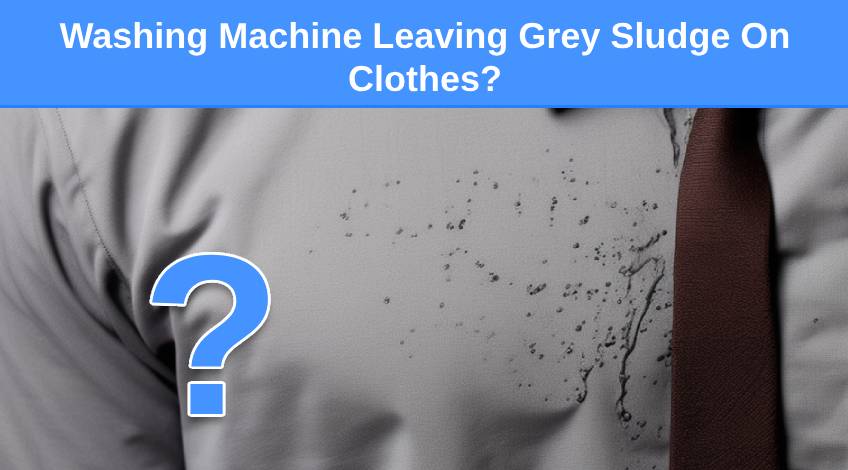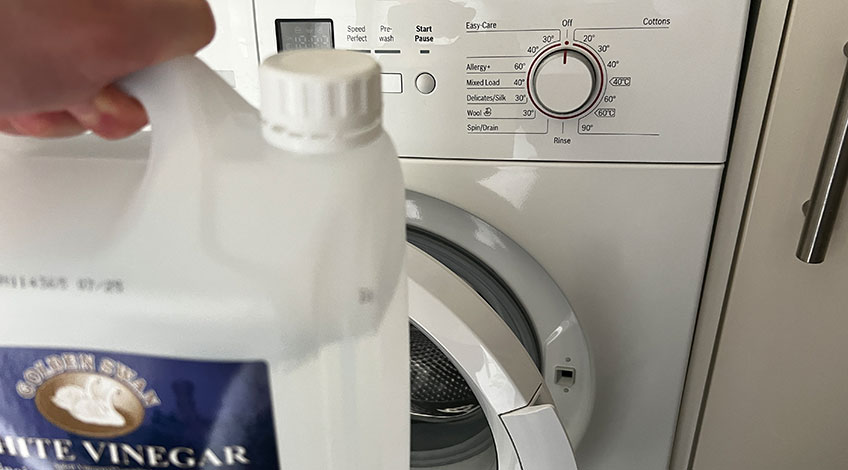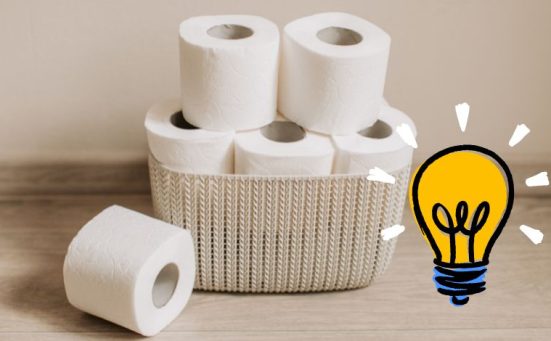
Washing Machine Leaving Grey Sludge On Clothes? (here’s why & what to do)
Have you ever pulled your clothes out of the washing machine, only to find mysterious grey sludge staining them? Don’t panic!
This unpleasant surprise is often an unfortunate mixture of grime, dust, dirt, mould, and even bacteria that has accumulated in your washing machine.
Essentially, the culprit behind this grey slime could be your water temperature settings, mineral deposits from hard water, excess detergent or fabric softener residues, or gunk from your fabrics or the machine itself. The good news is: a simple cleanup can put an end to these grey stains, leaving your clothes fresh and clean!
Let’s have a closer look!
Reasons Why There’s A Grey Sludge In Your Washer
Understanding the root causes of grey sludge is the key to preventing it. Let’s explore the most common culprits and how to tackle them:
Not Using Hot Wash Cycles
The most likely suspect for grey sludge is the water temperature you choose.
Going for low temperatures may prevent the detergent from fully dissolving, and if you use them constantly, there’s no denying that low temperatures may be the reason behind the awful smell in your washer too!
While cold water is eco-friendly, doing occasional hot washes (around 60° Celsius) helps break down accumulated gunk. Follow manufacturer guidelines for water temperature settings and run empty hot cycles if you prefer not to wash your fabrics in hot water.
Detergent And Fabric Softener Residue
Using excess detergent and fabric softener doesn’t make your clothes cleaner; it just creates more residue in your washing machine!

Reduce the dosage, especially with powder detergents, and clean your machine regularly to eliminate existing residues.
Blocked Detergent Drawer Dispenser
Residue can accumulate in your washing machine’s detergent drawer dispenser, hindering its function and causing grey slime on clothes.
Regularly clean the dispenser following the manufacturer’s guidelines and use a vinegar-water solution to disinfect it.
Limescale And Hard Water Deposits
Living in a hard water area can lead to limescale deposits, impacting your machine’s efficiency and contributing to grey sludge.
To solve this, you can install a water softener, though that’s going to cost quite a bit of money. Another good option is to use descaling agents or white vinegar during regular cleaning to dissolve the limescale.

Mould And Mildew Growth
Washing machines are breeding grounds for mould and mildew, especially in damp areas like the door seal and drum.
Regularly clean and dry areas that are often damp, and run maintenance washes.
Uncleaned Gasket
The rubber gasket around the door can accumulate dirt, lint, and detergent residue.
Regularly clean it with a water and vinegar mixture, reaching hidden areas with a soft-bristled brush.
TIP: Leave the door ajar for proper drying!
Insufficient Cleaning
By now, it’s clear: Neglecting regular maintenance allows residues and deposits to accumulate, affecting your machine’s performance!
It’s always best to establish a monthly cleaning routine, and don’t forget to wipe your washer’s exterior too!

How To Remove Grey Sludges From Your Fabrics
Before diving into removal methods, identify the cause of the grey sludges.

Knowing the actual source helps choose the most effective removal method.
Method 1: Pre-treatment with Gentle Detergents or White Vinegar
Pre-treating with a mild detergent or white vinegar can work wonders:
- Always perform a spot test on a small area of the fabric to ensure the detergent won’t cause discolouration or damage.
- Mix mild detergent or white vinegar with water.
- Apply the solution, let it soak, then gently rub the fabric.
- Then, blot the treated area with a clean, dry cloth to absorb excess moisture.
- Rinse the fabric thoroughly to remove any remaining detergent residue.
- Wash as normal.
TIP: You can also use lemon juice for spot treatment! As long as your fabrics are not delicate, lemon juice can help remove stains effectively.
Method 2: Use A Stain Remover
Commercial stain removers like Ariel can effectively tackle stubborn grey sludges. If you don’t have sensitive skin or skin conditions, the chemicals in the products will likely not irritate your hands!
Just make sure to follow product instructions carefully to avoid damaging your garments.
Method 3: Take It To A Dry Cleaners
For delicate fabrics or stubborn stains, opt for professional dry cleaning!
Make sure to take your fabric to a reputable dry cleaner. Read reviews and inform them about the grey sludges and any details about the substance that caused the issue.
Do You Want Stress-Free Laundry Sessions?
By understanding the reasons behind grey sludge and adopting preventive measures and effective removal methods, you can keep your clothes spotless and your washing machine in top-notch condition.
Say goodbye to grey stains and hello to fresh, clean laundry!
SEE ALSO: How To Make White Clothes Whiter With Baking Soda
Frequently Asked Questions
The grey gunk on your clothes after washing is likely a mix of grime, dust, dirt, mould, and bacteria that accumulates in your washing machine over time.
To prevent mould in your washing machine, regularly clean and dry damp areas like the door seal and drum, run maintenance washes, and leave the door ajar for proper drying.
Signs of hard water include limescale deposits, reduced soap lathering, and a white film on glassware and shower surfaces.
The three compartments in a washing machine drawer typically include sections for pre-wash detergent, main wash detergent, and fabric softener.
The best product to remove stains from clothes can vary, but commercial stain removers like Ariel are effective. Additionally, pre-treating with mild detergent, white vinegar, or using professional dry cleaning can be suitable depending on the fabric and stain type.
Also, follow us on Pinterest ...



